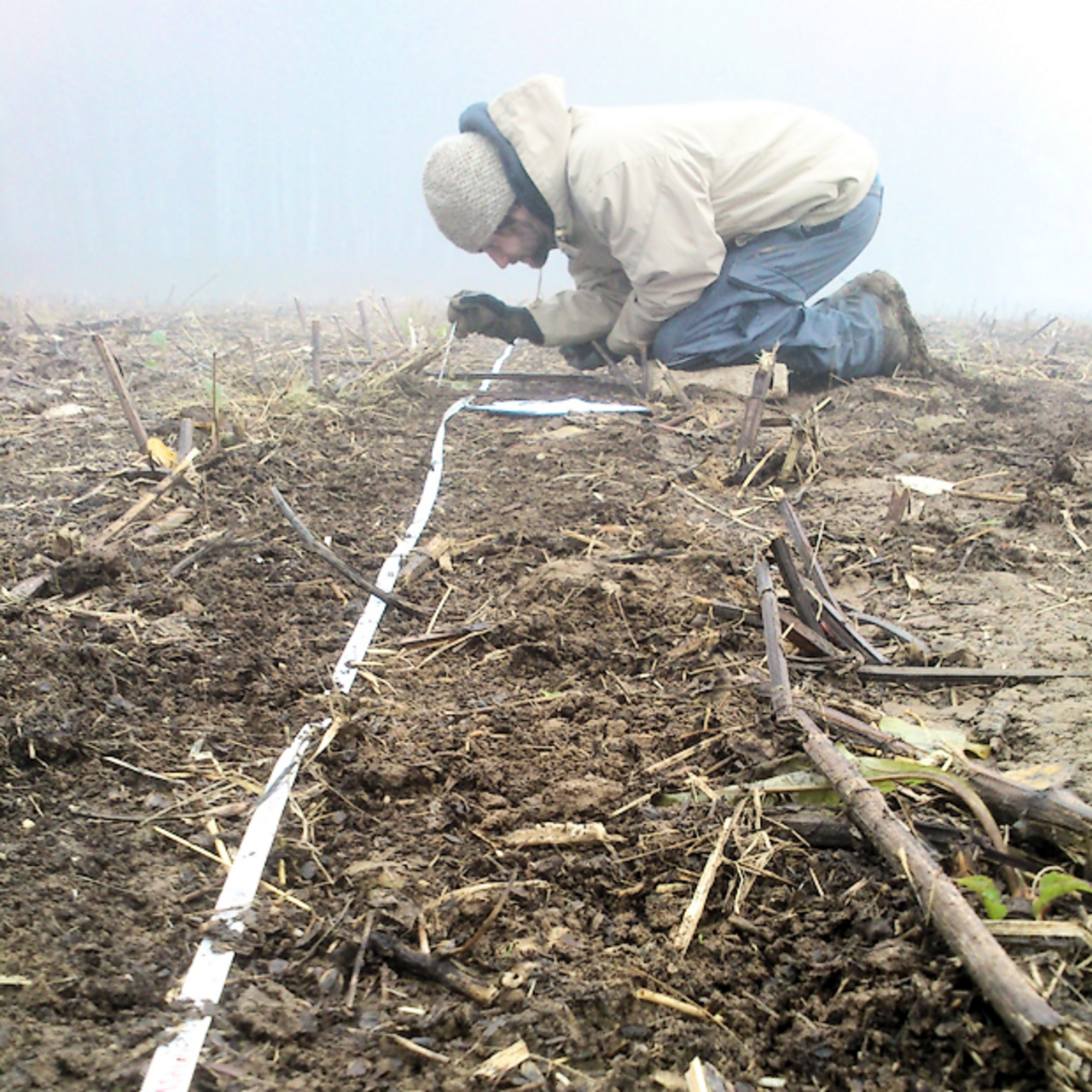Project
Assessment of the cup plant based on soil biodiversity

Agroecological assessment of the cup plant (Silphium perfoliatum L.) as a biomass plant of the future
The cup plant (Silphium perfoliatum) with its high yielding ability is a promising candidate for biomass production to counteract short maize crop rotations and monotonous agricultural landscapes. The perennial lifecycle, a long-lasting flowering period as well as low tillage and low requirements of plant protection measures imply positive effects on biodiversity and ecosystem services.
Background and Objective
The general aim is to investigate the impact of the cup plant (Silphium perfoliatum) on agroecosystems with a focus on functional aspects of biodiversity. The project will provide scientific guidance for a sustainable establishment of the cup plant cropping system. This project focusses on soil biodiversity with following aims:
(i) Monitoring of soil fauna communities regarding the structural diversity of nematodes, collembolans and earthworms in crop stands of different age during the vegetation period;
(ii) Assesment of the functional role of soil biodiversity rearding decomposition dynamics of crop residues and C- and N- dynamics in soil.
Approach
Twelve fields of S. perfoliatum from experimental and farming sites were sampled for nematodes, collembolans and earthworms to investigate long-term effects of this new cropping system on soil fauna communities and functions. Sampling and extraction of soil fauna took place in spring and autumn 2012 and 2013 and followed standardized ISO-guidelines. The fields represented an artificial timeline with fields established in 2004/05, 2007, 2009, and 2011 with 3 field replicates each. Maize fields (n=3) served as control. Earthworms are identified at species level, collembolans at family level. For nematodes feeding-type determination and calculation of NCR (nematode channel ratio) is performed.
Results
The results show a trend towards higher functional complexity and biodiversity in older S. perfoliatum fields. Younger fields show small differences compared to maize. The perennial cropping system of S. perfoliatum seems to build niches for a greater variety of life forms in agroecosystems and consequently facilitates decomposition processes.
Thünen-Contact

Involved Thünen-Partners
Involved external Thünen-Partners
- Julius Kühn-Institut - Bundesforschungsinstitut für Kulturpflanzen (JKI)
(Quedlinburg, Braunschweig, Groß Lüsewitz, Kleinmachnow, Deutschland) -
Thüringer Landesanstalt für Landwirtschaft
(Jena, Deutschland)
Funding Body
-
Fachagentur Nachwachsende Rohstoffe e.V. (FNR)
(national, öffentlich)
Duration
3.2012 - 7.2015
More Information
Project status:
finished
Publications
- 0
Schorpp Q, Schrader S (2017) Dynamic of nematode communities in energy plant cropping systems. Eur J Soil Biol 78(1):92-101, DOI:10.1016/j.ejsobi.2016.12.002
- 1
Schorpp Q, Müller AL, Schrader S, Dauber J (2016) Agrarökologisches Potential der Durchwachsenen Silphie (Silphium perfoliatum L.) aus Sicht biologischer Vielfalt. J Kulturpfl 68(12):412-422, DOI:10.1399/jfk.2016.12.12
- 2
Schittenhelm S, Dauber J, Schrader S (2016) Bericht über die Fachtagung "Die Durchwachsene Silphie, eine Energiepflanze der Zukunft? Perspektiven von der Pflanze bis zur Landschaft". J Kulturpfl 68(12):349-350
- 3
Schorpp Q, Schrader S (2016) Earthworm functional groups respond to the perennial energy cropping system of the cup plant (Silphium perfoliatumL.). Biomass Bioenergy 87:61-68, DOI:10.1016/j.biombioe.2016.02.009
- 4
Schorpp Q, Riggers C, Lewicka-Szczebak D, Giesemann A, Well R, Schrader S (2016) Influence of Lumbricus terrestris and Folsomia candida on N2O formation pathways in two different soils - with particular focus on N2 emissions. Rapid Comm Mass Spectrometry 30(21):2301-2314, DOI:10.1002/rcm.7716

![[Translate to English:] [Translate to English:]](/media/_processed_/e/3/csm_Demetra2_c8a192c0f8.jpg)
![[Translate to English:] [Translate to English:]](/media/_processed_/e/2/csm_Demetra1_Panorama_8557ee3b13.jpg)





